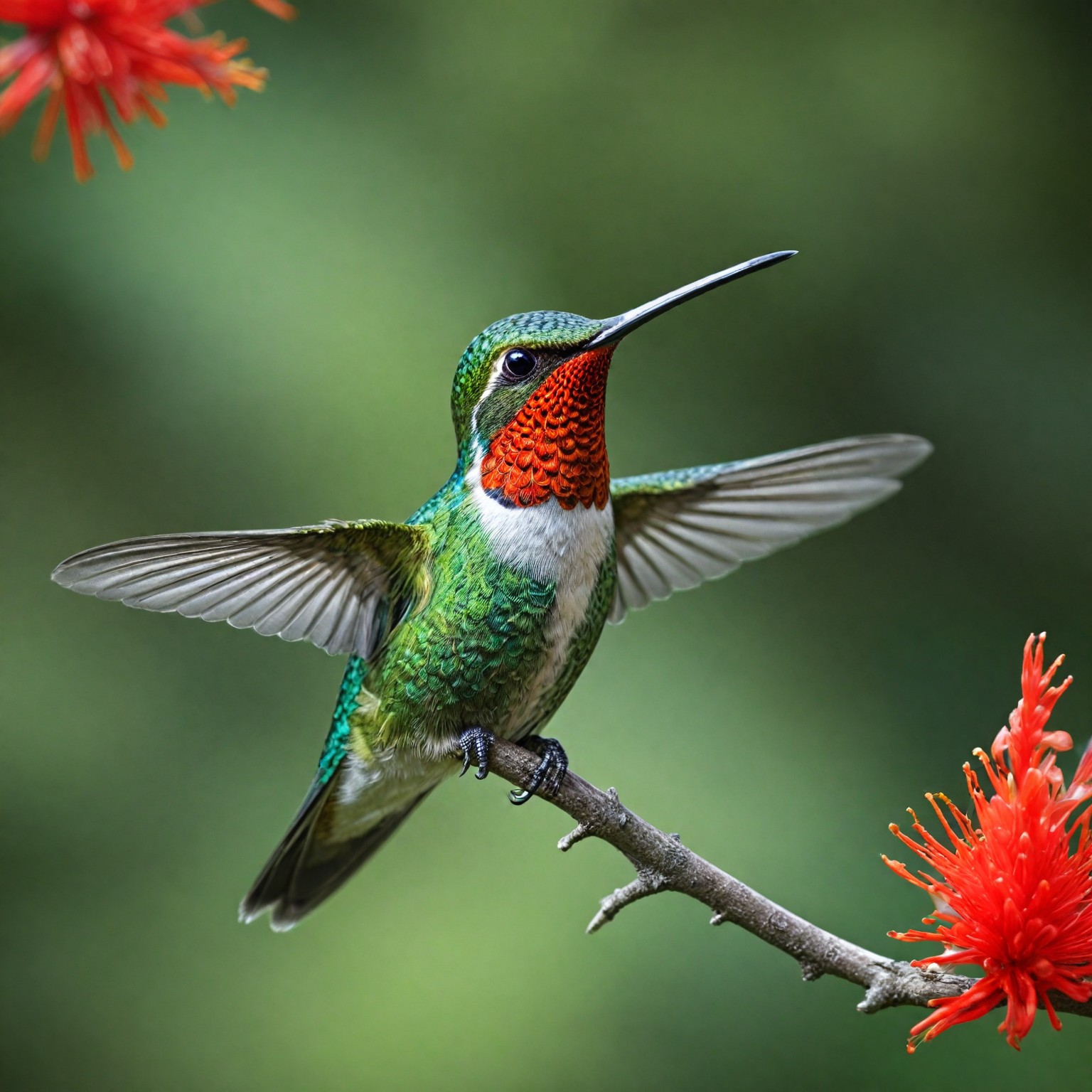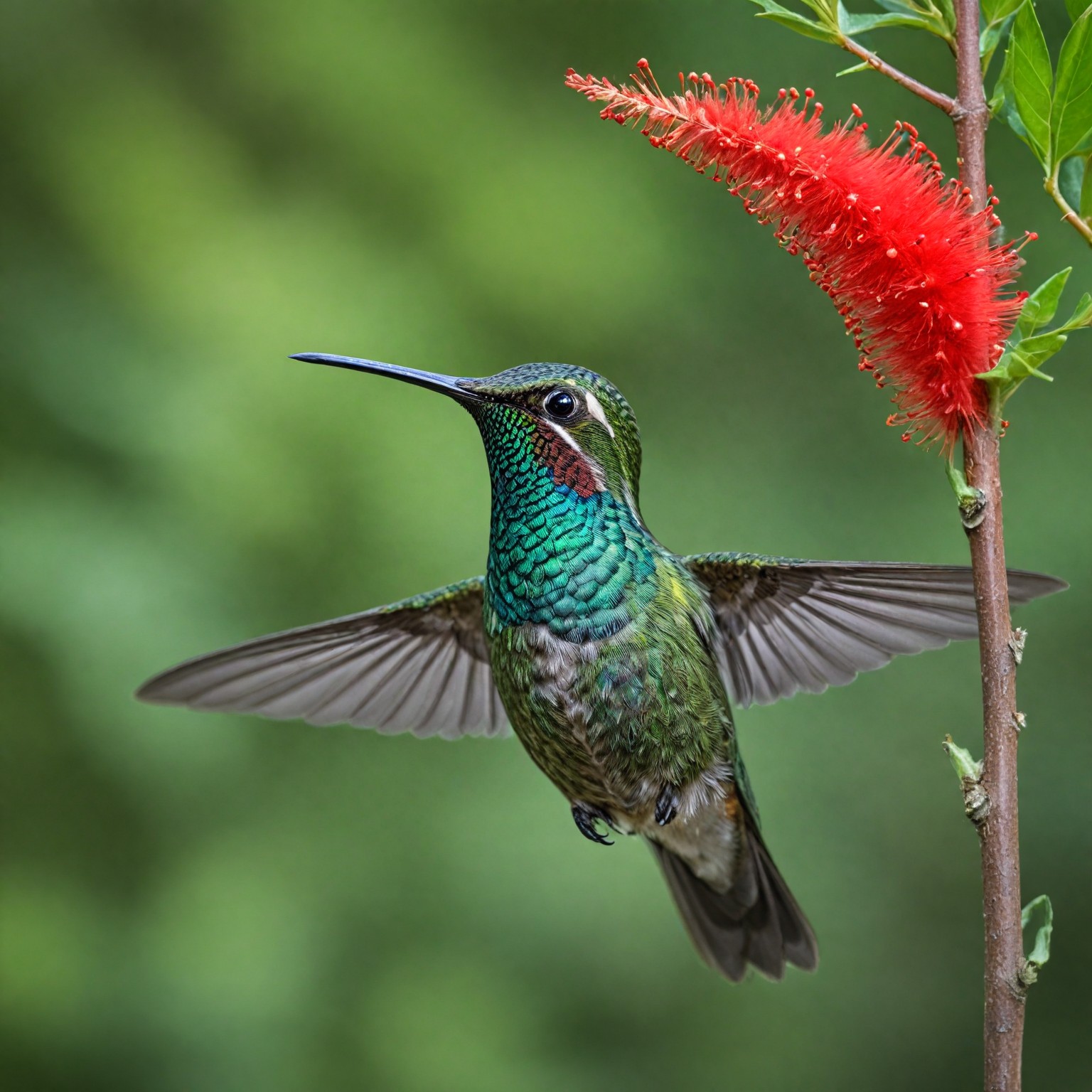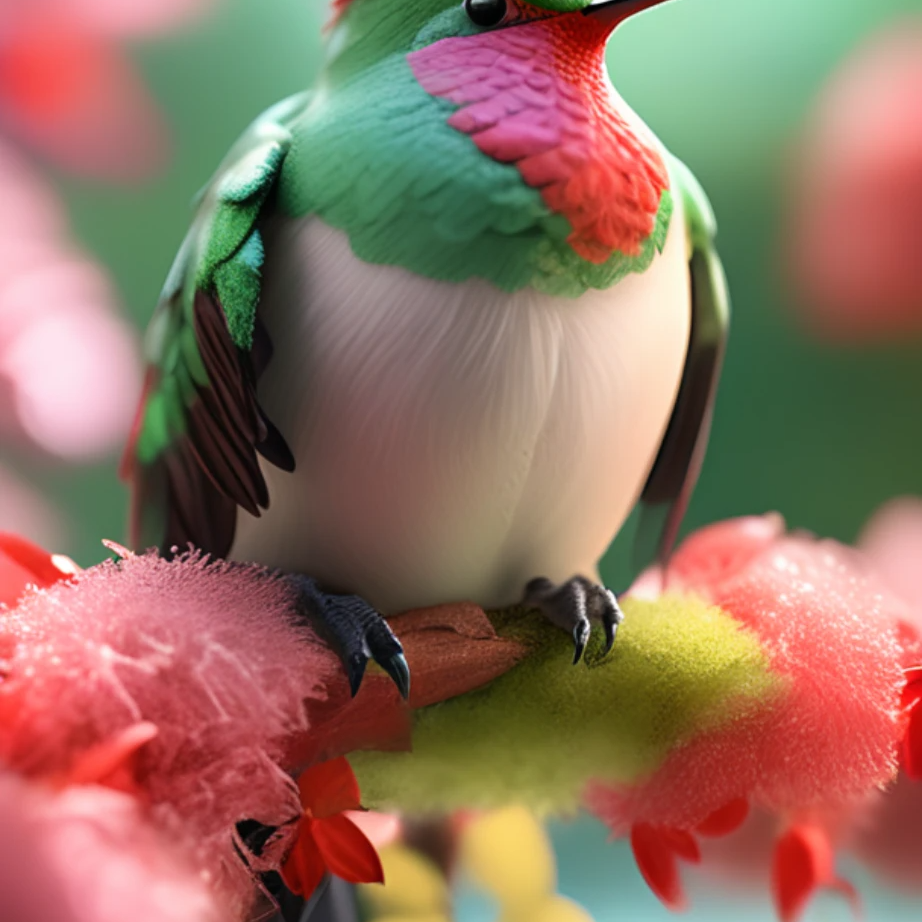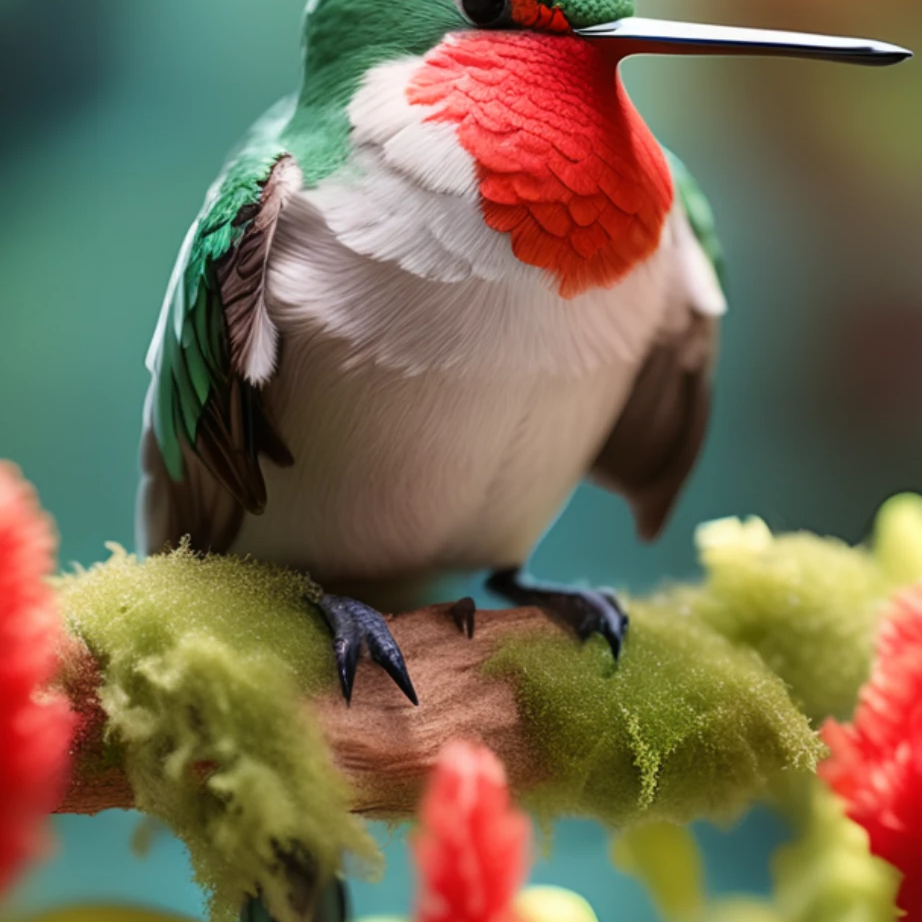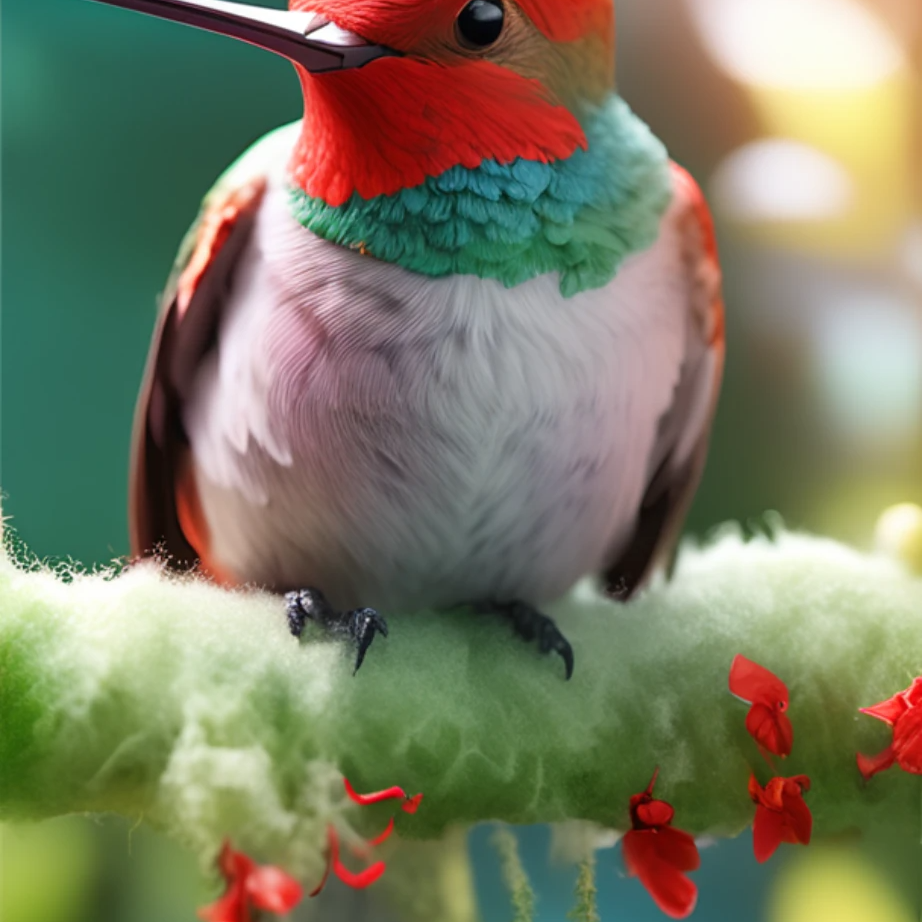Welcome to Birdie Buzz, where we explore the captivating world of birds and the beauty of nature. Today, we’re delighted to focus on one of the most enchanting creatures in the avian kingdom: the vibrant hummingbird. With its iridescent green and red feathers glistening in the light, this small bird is a true jewel of the forest. Perched gracefully on a branch, the hummingbird’s attentive look, with its head turned slightly to the side, captures a moment of serene beauty. In the background, a soft blur of greenery enhances the scene, suggesting a lush natural setting that complements this dazzling bird.
The Iridescent Beauty of the Hummingbird
Hummingbirds are renowned for their extraordinary beauty and unique iridescence. The vibrant hummingbird we are featuring today boasts a stunning combination of green and red feathers. These colors are not just pigments but are created by microscopic platelets in the feathers that reflect and refract light, producing a shimmering effect. This iridescence can change with the angle of the light and the bird’s position, giving the hummingbird a magical, ever-changing appearance.
The green feathers, reminiscent of emeralds, cover most of the bird’s body, blending seamlessly with the foliage of its natural habitat. The red throat patch, known as a gorget, is a standout feature, often appearing to glow with a fiery brilliance. This striking contrast of colors not only makes the hummingbird a visual delight but also plays a crucial role in its social interactions and mating displays.
The Attentive Hummingbird: A Snapshot of Grace
In this particular scene, the hummingbird is perched delicately on a branch, its head turned slightly to the side. This posture gives the bird an attentive and inquisitive look, as if it is keenly observing its surroundings. Hummingbirds are known for their incredible agility and sharp senses, which they use to navigate through their environment with precision. Their keen eyesight allows them to spot nectar-rich flowers and tiny insects, which make up a significant portion of their diet.
The bird’s small size and lightweight frame enable it to perform acrobatic maneuvers in flight, including hovering and rapid changes in direction. This agility is not only fascinating to watch but also essential for their survival, allowing them to evade predators and access food sources that other birds cannot reach. The hummingbird’s ability to hover in place while feeding is a unique adaptation that sets it apart from other bird species.
The Lush Background: A Natural Sanctuary
The soft blur of greenery in the background suggests a lush and vibrant natural setting. This effect, achieved through a photography technique known as bokeh, focuses attention on the hummingbird while providing a sense of depth and context. The blurred backdrop of leaves and plants highlights the hummingbird’s vivid colors and intricate details, making it the focal point of the image.
Hummingbirds are typically found in environments rich in flowering plants, such as tropical and subtropical forests, gardens, and meadows. These habitats provide the nectar that is the primary food source for hummingbirds. In return, hummingbirds play a vital role in pollination, helping to maintain the health and diversity of these ecosystems. The lush greenery not only supports the hummingbird’s dietary needs but also offers shelter and nesting sites, making it an ideal habitat for these remarkable birds.
The Fascination with Hummingbirds: Nature’s Living Gems
Hummingbirds have long fascinated bird enthusiasts and nature lovers alike. Their tiny size, rapid wing beats, and vibrant colors make them a symbol of beauty and agility in the natural world. These birds can hover in mid-air, fly backward, and achieve astonishing speeds, feats made possible by their unique wing structure and incredible metabolism.
In many cultures, hummingbirds are seen as symbols of joy, beauty, and resilience. Their ability to migrate over long distances despite their small size is a testament to their strength and determination. Observing a hummingbird in the wild, with its iridescent feathers catching the light, is an unforgettable experience that reminds us of the wonders of the natural world.
Conservation: Protecting the Jewel of the Forest
Despite their resilience, hummingbirds face numerous threats, including habitat loss, climate change, and reduced food sources due to pesticide use and competition with other species. Conservation efforts are crucial to protect these birds and ensure their continued presence in our ecosystems. Supporting habitat preservation, reducing pesticide use, and planting native flowering plants can help create safe and nourishing environments for hummingbirds.
By raising awareness and supporting conservation initiatives, we can help protect these living jewels and the habitats they depend on. At Birdie Buzz, we are committed to promoting the appreciation and protection of birds like the vibrant hummingbird, which adds so much beauty and wonder to our world.
Conclusion: Celebrating the Vibrant Hummingbird
The vibrant hummingbird, with its iridescent green and red feathers and attentive demeanor, is a marvel of nature. Set against a backdrop of lush greenery, this small bird embodies the splendor and diversity of the natural world. At Birdie Buzz, we celebrate the beauty of birds and their habitats, and we invite you to join us in appreciating and protecting these incredible creatures. Whether you’re a seasoned bird watcher or a curious nature enthusiast, the sight of a hummingbird is sure to inspire awe and wonder.
